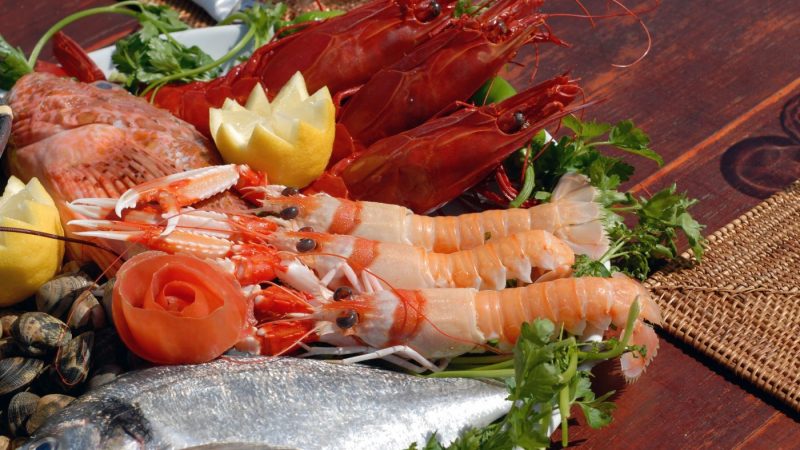(The Hill) — People who frequently consume seafood may face a heightened risk of exposure to toxic “forever chemicals,” a study has found.
Of all species tested — fresh from a market in coastal New Hampshire — shrimp and lobster had the most alarming levels of these PFAS compounds, according to the study published Friday in Exposure and Health.
PFAS, or per- and polyfluoroalkyl substances, are released into the environment from a variety of sources, including industrial discharge, certain types of firefighting foam and common household products.
Linked to several different types of cancers, these synthetic compounds have contaminated the nation’s water resources — as well as the species that inhabit them.
While scientists have long been assessing the presence of PFAS in freshwater fish, the study authors noted that seafood has thus far come under less scrutiny.
“Most existing research focuses on PFAS levels in freshwater species, which are not what people primarily eat,” corresponding author Megan Romano, an associate professor of epidemiology at Dartmouth College’s Geisel School of Medicine, said in a statement.
To draw their conclusions, the authors paired an analysis of PFAS concentrations in fresh seafood with the results of a statewide survey of dietary habits in New Hampshire. National-level research, the authors noted, has shown that New England as a region is a top consumer of seafood.
The scientists measured the levels of 26 different types of PFAS — of which there are thousands — in samples of the most-consumed marine species in the area: cod, haddock, lobster, salmon, scallop, shrimp and tuna.
While they purchased the products fresh from the coastal New Hampshire market, the seafood originated from various regions, according to the study.
They found that local market basket shrimp and lobster consistently had the highest PFAS levels, while concentrations in other types of seafood were generally lower.
The scientists then evaluated the risk of exposure to three particular PFAS offenders — PFOS, PFNA and PFUnDA — by using a ratio of the ingested daily dose of the compounds to their respective federal or state safe consumption thresholds.
The authors then combed through the results of their “Granite State Panel,” in which 1,829 New Hampshire residents participated in an online survey about their seafood consumption. Shrimp, haddock and salmon were the most popular and routine choices.
Ultimately, the researchers found that among high consumers of seafood, concentrations of PFUnDA and PFNA in shrimp did not present a risk, but levels of PFOS did.
Concentrations of PFUnDA in lobster were of potential concern for high-consuming individuals, but levels of PFOS and PFNA did not pose such a risk, according to the study.
But although New Hampshire residents do tend to eat a lot of seafood, they don’t do so uniformly, the authors noted.
More than half the individuals who said they consumed seafood the week before the survey lived along the coast or near the border with Massachusetts.
There were also divides according to finances: More than 60 percent of households with an annual income below $45,000 reported eating seafood at least once per week, while those with higher earnings did so less often, the study found.
“Our recommendation isn’t to not eat seafood — seafood is a great source of lean protein and omega fatty acids,” Romano said. “But it also is a potentially underestimated source of PFAS exposure in humans.”
“Understanding this risk-benefit trade-off for seafood consumption is important for people making decisions about diet, especially for vulnerable populations such as pregnant people and children,” she added.
